2017 Polo Match
The SBCC was invited by the Lakewood Ranch Women’s Club to join them as featured guests at the Jan. 15th match of the Sarasota Polo Club. Most of our contingent met prior to the event in order to caravan as a group to the polo field. Bob Szymanski was anointed caravan honcho. Our invitation was for the exclusive Members’ Pavilion on the south side of the field. However, Bob, apparently in the spirit of egalitarianism, detoured the group via the north side so that the general public and other rabble could also view our cars.
The outing included a potluck lunch and, with over 200 members and guests bringing dishes to share, the supply of varied and delectable food was never-ending. The screened pavilion was at mid-field and the weather was perfect for either sitting in or outside to watch the exciting and fast moving match. We had about 15 cars there and they were a hit, drawing many admirers. All had a great time, watching the thundering action of the horses and their mallet-swinging riders from up close, replacing the divots on the field at halftime, and refilling their glasses. Jan Hasler, event coordinator for both groups, and the LWRWC’s 2016 Woman of the Year, was one of the selectees to hand out the trophies and prizes to the polo players at the conclusion of the match. Everyone clearly enjoyed the day’s festivities.
Those of us who are non-aficionados of polo also learned some interesting facts:
1. Polo originated in Persia in the 6th century BC.
2. The field at 300 x 160 yards is the largest playing field of any competitive sport, with the possible exception of pumpkin chunking.
3. Polo “ponies” are actually full size thoroughbred horses.
4. There are six chukkers in a polo match, each lasting 7½ minutes. The eight players typically change horses every chukker.
5. The horses are in the $30-50 thousand dollar range. When you add in the cost of room and board for each horse, one can see it is an expensive sport, sort of like collecting classic cars, but substituting oats for petroleum products.
[Thanks to Jan Hasler for help with this posting.]



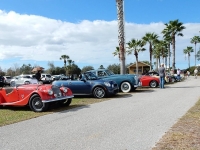
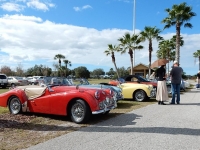
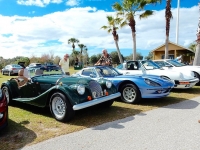

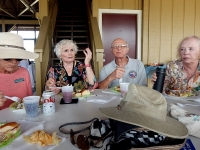
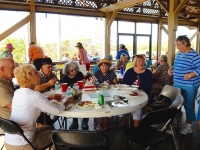

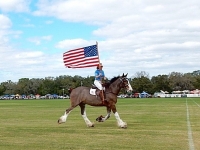




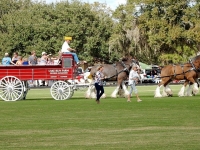


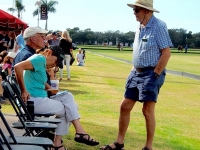

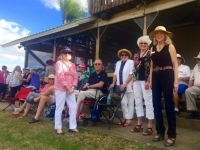
Leave a Reply
You must be logged in to post a comment.